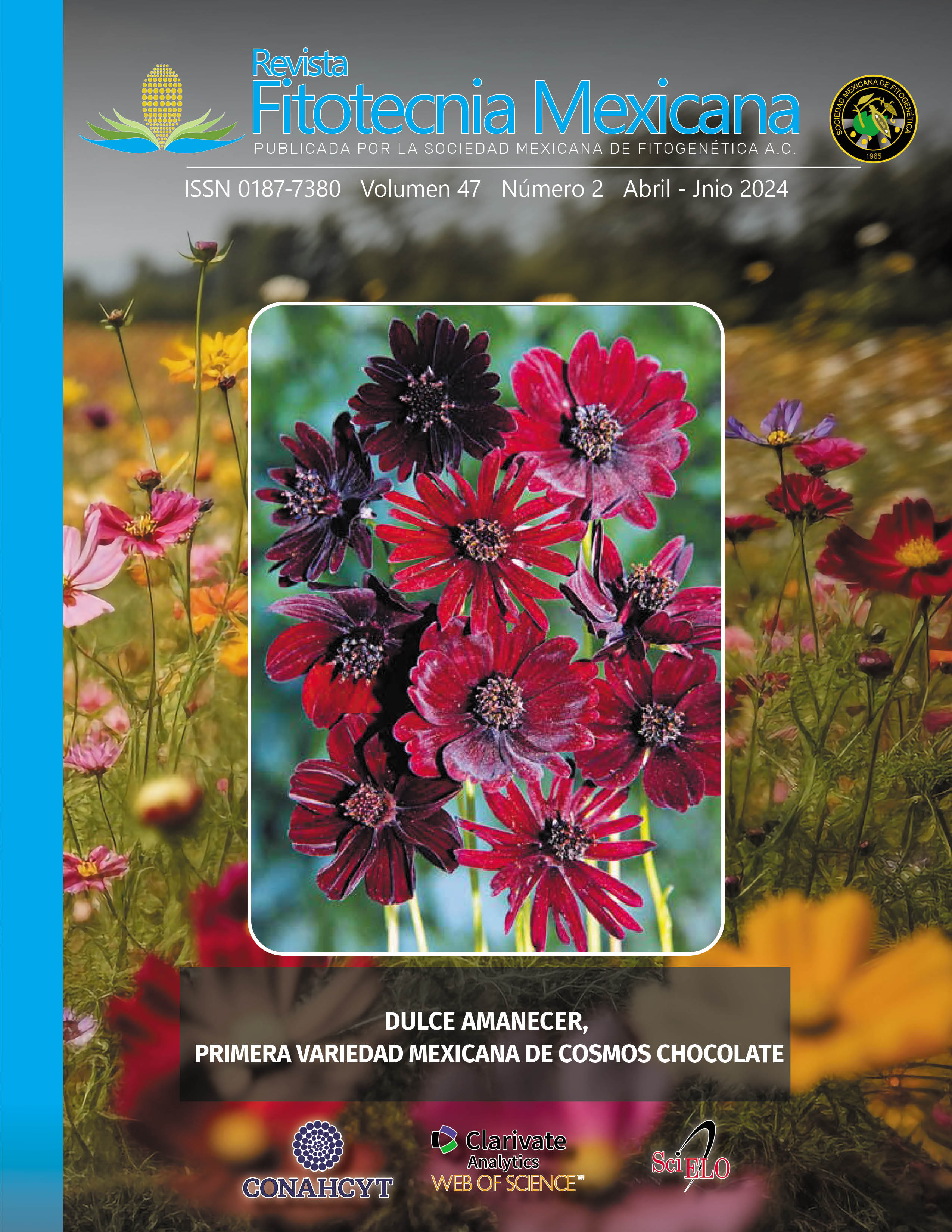PHYSIOLOGICAL RESPONSE OF STEVIA (Stevia rebaudiana) WITH CHEMICAL AND ORGANIC FERTILIZATION
Main Article Content
Abstract
Stevia (Stevia rebaudiana Bertoni) is a natural non-caloric sweetener, it is 15-30 or 200-300 times sweeter than cane sugar in leaf and extract, respectively. The objective of the present study was to evaluate the growth and development of stevia with chemical and organic fertilization. An experiment was established under a randomized complete block experimental design with seven treatments and the control: T1 (humus 400 g/plant), T2 (chicken manure 300 g/plant), T3 chemical (180N-60P-92K), T4 (humus + chicken manure), T5 (humus + chemical), T6 (chicken manure + chemical), T7 (humus + chicken manure + chemical) and the control (unfertilized). Four samplings were carried out at 35, 57, 79 and 99 days after transplantation (dat), in each sample the root length (RL), plant height (PH), leaf area (LA), dry weight of roots (RDW), stems (SDW), leaves (LDW) and total (TDW); were evaluated in addition, the relative growth rate (RGR), net assimilation rate (NAR), leaf area ratio (LAR), leaf weight ratio (LWR), specific leaf area (SLA) and biomass partition coefficient (BPC) of root, stem and leaves were calculated. Results show that the treatment with humus application produced the highest PH (95.1 cm) and RL (33.5 cm) at 99 and 79 dat. The humus and chicken manure treatments showed the highest RDW (13.13 and 11.47 g), respectively, at 99 dat. The best treatment was 400 g humus/plant + chemical (180N-60P-92K), as the highest LA (4118.7 cm2), SDW (38.4 g) and LDW (44.9 g) were obtained at 99 dat. In TDW at 99 dat all treatments were statistically equal but higher than the control. There were no differences in RGR and NAR at 99 dat. As a conclusion, fertilization with individual sources of humus and chicken manure generates good results and these are increased if mixed with chemical fertilization.

